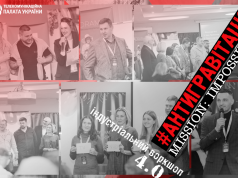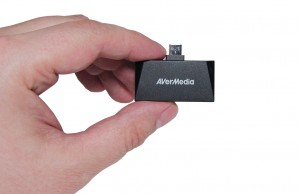The increase in Internet providers’ subscriber base has discontinued, and the market has reached saturation, as evidenced by statistics. There were defined main players, which control the market. But the competition does not cease, for their dynamic development the companies are continuously coming up with new market-speaks.
________________________________________
Dynamics of the Market
According to the iKS-Consulting’s study, the rate of connecting new subscribers dropped up to 7.5% in 2013, and in 2014-2015, there was a decline in subscribers. According to the State Statistics Service, due to the occupation of the Crimea, the Internet providers lost 110.6 thousand broadband internet subscribers (BBA). Also, judging by statistics, a significant number of users remained in the temporarily occupied areas of Lugansk and Donetsk regions. As of January 1, 2016, there were 6 million 89.9 thousand subscribers in Ukraine, of which 5 million 625.1 thousand represented households.
According to the study conducted by the Factum Group Ukraine, the total Internet audience, excluding the Crimea, grew by 59% amounting to 21.8 million subscribers. A year earlier, there were 18.8 million. From 2012 to 2015 the number of Internet users in rural areas more than doubled, i.e. from 21% to 45%.
At 1st quarter-end of 2015, the top ten providers of fixed Internet (in terms of subscribers’ number) were ranked by the following companies:
• Ukrtelecom JSC
• Kyivstar Group
• Volia Group
• Triolan Group
• Fregat Group
• PJSC Datagroup
• NPP Tenet Ltd.
• Vega Group
• Lanet Group
• Freenet Ltd.
The largest subscriber base belongs to the company “Ukrtelecom”. It serves over 1 million 600 thousand subscribers. The “Kyivstar” ranks second. It has some 834 thousand clients. The company “Volia” comes with 600 thousand connections. The “Triolan” follow far behind with 286 thousand subscribers. Then follow the “Datagroup” and the “Fregat” with near 220 thousand connections each. The “Tenet” ranks seventh with over 150 thousand customers. About 147 thousand subscribers are at disposal of the “Vega”, and some 126 thousand customers of the company “Lanet”. The rating is closed by the “Freenet” with over 111 thousand users.
Competition and Regulation
The main news of the past year in the area of Internet access became the tender for providing 3G Internet services held among mobile operators. The fixed broadband access providers kept a close eye on the market situation. Some experts suggested that it would somehow affect the BBA market, but their concerns proved groundless, at least for the time being. According to the providers’ representatives, it is still too early to talk about the competition between BBA and 3G. These technologies complement each other rather than compete.
In addition to new Internet access technologies, the providers monitor new legislative initiatives that affect the entire market. It has recently become known about the initiative of the National Commission for the State Regulation of Communications and Informatization concerning the guaranteed Internet access speed for providers to ensure. Today, the contracts indicate speed “to a certain access value”, i.e up to 100 Mbit/s or 1 Gbit/s, and the lower limit is not restricted. The regulatory authority comes up with a suggestion to obligate providers to fix a minimum connection speed of at least 70% from the one specified in contracts and advertising. It is expected that this would allow protecting consumers’ rights and putting “gray” providers out of the market, which either lack licenses, or provide poor services.
The service providers actually indicate a minimum connection speed just for the business community, i.e. companies where the Internet access speed and stability are crucially important to their activities. Among these are banks, for example. And this service is much more expensive than the standard connection.
The industry’s representatives took that idea ambiguously. First, the National Commission did not answer the question how to calculate the Internet access speed. The experts emphasize that this term is some blurred and it is unclear how to measure the access speed. The speed can be calculated indeed in the network under provider’s control, but it is also possible to measure the speed of various Internet resources. And in the latter case this parameter depends on the “output” of information from the server, and the provider can not affect it. The providers also unanimously declared that in case of introducing such a rule, the Internet access fee will go up, and therefore, this burden will lie on users. The increased fee is due to the fact that it will be required to install additional equipment to control the Internet access speed, and these are extra costs.
In 2015, almost all the providers also adjusted their tariffs upwards. A significant part of the companies’ costs is represented by foreign exchange transactions, and in view of the UAH’s strong fall, there could appear problems with supporting operational activities.
This provider is a unit of the SCM Group, owned by Rinat Akhmetov. Because of the annexation of the Crimea and the occupation of some areas of the Lugansk and Donetsk regions, the “Ukrtelecom” lost some 50 thousand subscribers, which led to losses and lost revenue of near UAH 240 million. Today, the connection is available in 1400 localities of Ukraine.
The “Ukrtelecom”’s services are enjoyed by over one million and a half subscribers, and these are not only households, but also business entities. So, in order to increase its subscriber base, the provider will connect until mid-2016 some 200 petrol stations “OKKO” by applying fiber-optic communications. A similar project has been also implemented at petrol stations “WOG”, there are connected over 300 offices and the company’s petrol stations. In addition, at the end of 2014, the “Ukrtelecom” increased its coverage in rural areas by over 50%.
Since March 2015, the company’s tariffs were revised upwards. They have risen in price by an average of 10%, but the provider left to its subscribers an option of free changing over to a cheap tariff. The service package was somewhat expanded, i.e the subscribers were also offered an access to interactive television.
The company states that 2016 will be a year of deep technological modernization of the network, along with business processes transformation. The company has signed a series of agreements with Chinese investors, who will grant a loan of USD 50 million for the period of up to 2022. The money will be used for a deep update of the network in six largest Ukrainian cities. The modernization plan provides for creating a centralized network control structure, as well as ADSL replacement by advanced communication standards.
The “Ukrtelecom” still keeps a rather archaic package of tariffs. So, one may find the connection speed in the fiber optic channel up to 10 Mbit/s, which will cost within UAH 65 to 100. It is tough to tell the guidelines of the company’s product managers, but the fact remains. The fastest speed is up to 100 Mbit/s and it costs within UAH 100 to 150 depending on the connection site. But this is an advanced fiber optic technology. And the significant part of customers is still connected via the ADSL outdated technology that applies existing telephone lines. The Internet access speed via ADSL, its fastest standard, does not exceed 24 Mbit/s, but the real figures are much lower. The subscription fee depends on the region and ranges from UAH 70 to 140.
In 2015, the company made the emphasis on deploying 3G networks. However, that year resulted successful in the fixed-line telephony segment.
We shall recall that in 2014 the company controlled near 23% of the Internet access market in the Crimea, offering its services in Simferopol, Sevastopol, Yalta, Yevpatoriya, Kerch, Feodosiya, Krasnoperekopsk. The “Kyivstar” was the second operator there after the “Ukrtelecom”. After the annexation of the peninsula, the “Kyivstar” lost some 30 thousand subscribers. That loss was managed to compensate by the growth on the mainland. In late 2014, the company had a portfolio of 813 thousand households, which is 7% higher than a year earlier. In 2015, the “Kyivstar” already served 834 thousand households. Such a result was possible to achieve by the company just for six years. Today, the BBA network covers near 4 million apartments, which is only 20% of the market; therefore one of the company’s future priorities is its geographic coverage expansion.
Last year, the revenue from providing broadband Internet access amounted to UAH 967 million. As stated by the company, it is only 4% of all the “Kyivstar”’s sales. In order to increase its profits the company generates new attractive offers. For example, the Internet TV service, which is provided in cooperation with the satellite TV operator Viasat. The service is available in all the cities having BBA. The premium package with 130 TV channels, including HD, as well as the internet channel of 100 Mbit/s, will cost UAH 259 per month. The fastest connection without TV package at a speed of 100 Mbit/s will cost UAH 100 per month.
The work on “convergence” or package services is in progress, when subscribers are simultaneously offered mobile telephony, fixed Internet and television. The “Kyivstar” believes that none of the immediate competitors is capable of offering such a comprehensive solution.

“Volia” Intensifies its Offensive
The revolution and war did not skirt the company “Volia”. In July 2014 it left the Crimea, and in late 2014 ceased its operation in Donetsk and Makeyevka. Despite those losses, the provider went on developing and increasing its subscriber base, both due to natural growth and by acquiring small regional companies. For example, the “Asava-Service” was absorbed in December 2014. In general, the company ended 2015 on a positive note, i.e it expanded coverage by connecting Belaya Tserkov, Zhitomir, Fastov. Now the “Volia” serves 600 thousand users.
The provider stakes on technological development by promoting, in particular, EuroDocsis 3.0, an innovative data transmission standard via TV cable. The transition to it was planned only in late 2015, but was implemented in the autumn. The new standard will allow arranging Internet access at a speed of up to 400 Mbit/s in Kiev, Zaporozhe, Kirovograd, Lutsk and Lvov. Thanks to EuroDocsis 3.0 the traffic consumption in Kyiv grew by 20%, in other covered cities the growth exceeded 35%. The provider has a good safety margin in case of traffic increase, i.e. in 2015 there were increased capacities of Internet access external channels and the national transport network up to 40 Gb/s. By analogy with other providers, the “Volia” offers Internet access along with the option of watching Internet TV, putting a special focus on HD-broadcasting.
The most expensive package “Internet plus TV” will cost new subscribers UAH 69, and this is a promotional fee for five months. Then the price increases up to UAH 170. The offer includes Internet of 100 Mbit/s without traffic restrictions and the package “Volia HD” consisting of some 130 channels, with over 10 of them in HD quality. It is possible to connect Internet without a TV package. The company offers a channel of 100 Mbit/s, which will cost UAH 55 per month, and after five months, the price will be UAH 125.

Problematic, Socially Responsible “Triolan”
The provider has some 286 thousand subscribers. The company states that it is experiencing hard times, i.e. in spite of expanding its subscriber base and increasing income in UAH, in terms of currency the market lost ground by half. And given the fact that over half of the costs are foreign exchange transactions, the company has greatly reduced its profitability. Today, the provider operates in Kharkov, Kiev, Dnepropetrovsk, Zaporozhe, Odessa, Poltava, Rovno, Sumy, Chuguyev and Brovary. The connection fee starts from UAH 50, the subscription fee is near UAH 150 per month for the access speed of 1 Gbit/s.
In December 2015 it became known that the company would provide Wi-Fi internet access in all health care facilities of Kiev. It will spend on it around UAH 10 million, and the refund will be carried out via an advertising model. Previously, the “Triolan” similarly connected 180 Kiev schools to the Internet.
The “Triolan” comes under our notice by two features. First, since recently the company’s subscribers may use Internet absolutely for free during working hours, from 8 a.m. to 8 p.m. from Monday to Friday. The top management explains such a marketing ploy by the society informatization and that they still bear network costs, while during working hours the network load is minimal.
The second feature is a focused attention to the service provider’s activities of regulatory, supervisory and law enforcement agencies. In the autumn of 2015, the company was persecuted for connecting new subscribers to Internet allegedly through figureheads and by using fraudulent documents. The case was conducted by the National TV and Radio Broadcasting Council. In October there appeared a shocking video with a man wearing the “Triolan”’s uniform and telling about the company’s funding the separatist “Oplot”. That fact provoked interest of the Ukrainian Prosecutor’s Office and the Security Service of Ukraine (SBU). Then there surfaced the facts of transfering money to the account of “Oplot” and other circumstances. The media also spread rumors that the company “Triolan” was in the range of interests of Gennady Kernes. This means that there are more politics around the provider’s activities than IT-business.
In February 2016 it became known that the house of Vadim Sidorenko, company’s director, was visited by the agents of the State Fiscal Service who seized a safe with money, documents and other materials that might be associated with tax dodging and separatists’ supporting.
“Fregat” from Dnepropetrovsk
In early 2014 it was a small regional provider in the Dnepropetrovsk region, which had just over 100 thousand subscribers. Due to the merger with the company “Megalink” and thanks to expanding its geography, the company managed winning 220 thousand subscribers after half a year. A more aggressive growth, according to the “Fregat”’s top managers, is impeded by the dumping policy of the major players in the broadband access market. For the time being, the provider offers its services in Dnepropetrovsk, Cherkassy, Krivoy Rog, Zaporozhe, Kremenchug and other cities of Ukraine.
The most expensive tariff is UAH 139 and offers subscribers an unlimited channel at a speed of 100 Mbit/s.
“Datagroup” is a Backbone Player
The main activity of the “Datagroup” is business solutions and backbone networks. The company controls one of the largest telecom networks DWDM and FOCL with a total length of almost 20 thousand km. Under the “Datagroup”’s control there are own international nodes in Germany, Poland, Russia, the Netherlands and China. The Most large-scale projects are related to the expansion of the capacity of the backbone channels in international sites, for example in Poland, the Netherlands and Germany. The total capacity of all the company’s external channels exceeds 900 Gbit/s. The most interesting projects in the B2B segment are the creation of a telecommunications data exchange network for the Ukrainian State Air Traffic Services Enterprise (UkSATSE), as well as the implementation of communications in the area of anti-terrorist operation (ATO). In Ukraine, the company occupies 46.5% of the data transmission market.
In 2010, the company “Datagroup” offered their retail customers a service provider under the brand “Home Telecom”. Today, the provider ensures an Internet access by applying all the advanced technologies like Ethernet, ADSL, Wi-Fi. The company operates in Kiev, Cherkassy, Kharkov, Dnepropetrovsk, Zaporozhe, Nikolayev, Odessa, Khmelnitsky and other Ukrainian cities. As of the 1st quarter of 2015, the subscribers to the “Home Telecom” accounted for near 220 thousand.
The provider “Home Telecom” offers its subscribers a variety of connection modes. When using an optic cable the most expensive tariff will cost UAH 129 per month for a leased line of 100 Mbit/s. For a number of Ukrainian cities there are promo offers in the form of a special connection price, which is lower than the specified subscription fee. When connecting to the Internet and digital TV, the subscription fee for 100 Mbit/s will cost UAH 150 per month. The most expensive ADSL standard will cost UAH 125 at a speed of up to 24 Mbit/s. The company also offers the option of Internet connection via Wi-Fi network. Such a service will cost UAH 500 per month, given a one-time payment of UAH 900. Or it will cost UAH 1000 per month, given a one-time payment of UAH 150. This connection option implies a speed of up to 10 Mbit/s. There is also a satellite Internet option, being the most expensive connection mode. It restricts traffic up to 60 GB in the VIP tariff and reception speed up to 20 Mbit/s. This tariff costs UAH 1250 per month.
FANTASTIC FOUR
“Tenet”
The provider operates in the Odessa and Nikolayev regions and serves over 150 thousand subscribers. In addition to Internet access, the company provides services of digital TV and telephony. The most expensive tariff is UAH 378 per month. It includes a dedicated channel of 1Gbit/s, a subscription to one device for city Wi-Fi network, up to 200 digital TV channels, two telephone lines and 600 minutes for local calls. The company “Tenet” is known for implementing free Wi-Fi in and around Odessa. The service works under an advertising model. A user goes online for free, but he is occasionally offered to watch advertising messages.
“Vega”
It is another relatively small provider that ranks among Top 10 Internet access providers. According to published company’s press release, the operator’s subscriber base included 156 thousand users at the end of 2015. The coverage is 159 localities in 22 regions of Ukraine. The company is engaged in active absorption of regional operators, thereby expanding its subscriber base. In March 2014 it bought the Zhitomir provider “MyLanPlus”, in autumn – the Odessa provider “Belnet”, and in 2015 – a part of the “MTS-Ukraine”. The company is actually into the negotiations with other operators. In 2015, the company invested some UAH 50 million to change the ADSL network to the FTTx one, in 2016 it is planned to continue replacing outdated technologies and equipment. The “Vega” is incorporated into the SCM Holding along with the “Ukrtelecom”, but as for now, according to the statements of the company’s management, is not planned merger of the companies, so they go on developing simultaneously.
“Lanet”
The company serves 126 thousand subscribers. Due to the low initial subscriber base it has shown a good increase in percentage of subscribers in the last two years. The company is not burdened with cheap tariffs and starts providing Internet where others stop. The provider has the highest revenue per user. The most expensive tariff costs UAH 150 at a speed of 200 Mbit/s. When connecting to Internet plus TV, the most expensive tariff will cost UAH 269 of subscription fee. It includes Internet of 300 Mbit/s and TV package with the 23 HD, 135 digital and 75 analog channels. The company is also actively engaged in attracting new customers through social networks, attracting young and active users who are ready to consume more and pay more.
“Freenet”
The provider operates under the brand “O3”. At the end of 2015, there were 112 thousand users in the company’s subscriber base. The company operates in Kiev, Zhitomir, Lvov, Dnepropetrovsk, Krivoy Rog, Ivano-Frankovsk and other Ukrainian cities using the FTTx and Ethernet technologies. The tariff scale looks quite fancy. The “Freenet” separates the Ukrainian Internet segment with providing access of 100 Mbit/s under any tariff and the foreign Internet segment. The access speed is limited there within 20 and 100 Mbit/s. The most expensive tariff is UAH 62.5 in the block of flats, or UAH 500 when serving subscribers in the Pechersk district of Kiev and in Koncha Zaspa.
Prospects of Wired Internet
The large Ukrainian cities are already covered with networks by over 90% and towns with a population exceeding 50 thousand people – by 60-70%. Villages and small towns are covered by less than 40% and they are that may become drivers of growth for Internet providers.
Generally in cities, all the providers offer much the same package of services. This is Internet of 100 Mbit/s costing within UAH 100 and 150, unlimited traffic and internet TV package. There is a tendency of increasing speed without significant increase in subscription fee. Small towns and villages are capable of connecting via the ADSL technology, the speed of which is lower than in a dedicated channel of fiber-optic cable. However, for web surfing and simple tasks the speed of up to 24 Mbit/s is quite enough. The industry experts believe that 2016 will be marked by technical retooling and the entry of major players into the regions with growth potential and opportunity of moving into the fore, including through mergers and acquisitions.
In the regions, especially in the East, there is a fierce competition for users, which is demonstrated by sponsored publications in the mass media and by pitting regulatory and law enforcement authorities against each other. As evidenced by experience, small regional companies, if they can not enlarge and agree among themselves, will be purchased by those players who already control a significant market share nationwide.





















